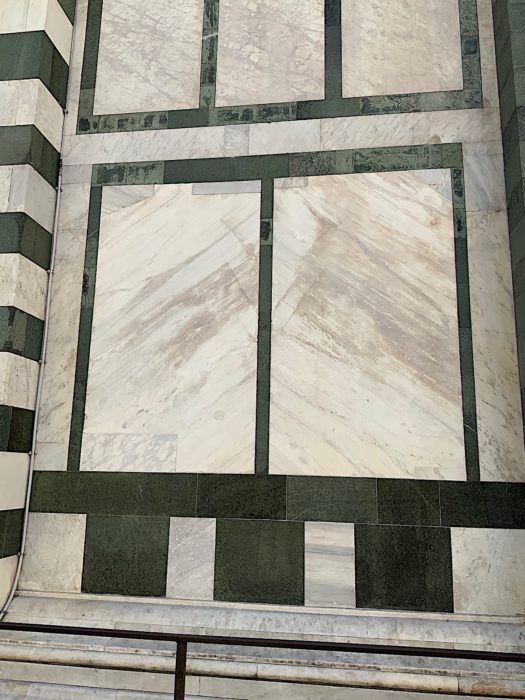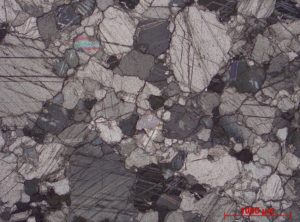
Lithotype
Marbles
Common names
Marmo Lasa, Marmo Bardiglio, Marmo Cipollino o Carystium, Marmo Pentelico, Marmo Imetto, Marmo Thassos, Marmo Montagnola Senese
Rock classification
Metamorphic rock
The marbles used in the florentine architecture are several and, in some cases, their provenance is unknown. The most used marbles , for which historical and compositional data are available, have Italian and Greek origin. In particular, the Lasa Marble (Venosta Valley, Trentino Alto Adige), the Montagnola Senese Marble (Siena) and the Bardiglio Marble (Carrara) come from Italy; the Pentelic Marble (Mt. Penteli, Athens), the Imetto Marble (Kareas, Athens), the Thassos Marble (Island of Thassos), and the Cipollino or Carystium Marble (Eubea) come from Greece.
These rocks originated through a metamorphic process of a limestone protolith; they outcrops in several localities in Greece (Cipollino or Carystium, Pentelico, Imetto and Thassos Marbles) and in Italy (Venosta Valley, Trentino Alto Adige (Lasa Marble), Siena (Montagnola Senese Marble) and Carrara (Marmo Bardiglio).
The Pentelic, Imetto and Thassos are marbles coming from the ancient and destroyed Roman monuments of Fiesole (Tuscany); they were reused in the Basilica di San Miniato, Badia Fiesolana and in the Battistero di San Giovanni; the Cipollino or Carystium Marble was used in the San Zanobi column; the Marble of Montagnola Senese was used in the Basilica di Santa Maria Novella; the Lasa Marble was used in the restoration of the XX century in the Battistero di San Giovanni; the Marmo Bardiglio was used in the Battistero di San Giovanni and in the portal of the Chiesa dei Santi Apostoli.
The different marbles are characterized by the presence of a high content of calcite; in some cases dolomite (Thassos) is also found. other minerals, such as chlorite, epidote and pyrite can be present in the Pentelic marble; mica, quartz and iron oxides are observed in the Imetto marble; epidote, titanite, plagioclase and minerals of of serpentine group are present in the Thassos marble; the presence of mica, epidote, chlorite is observed in the Cipollino or Carystium marbles. Pigments, responsible for the different colors, are also present.
Macroscopic description
The Greek marbles mainly display veins and gray, green and yellow streaks like the Imetto and Pentelico marbles. The Cipollino or Carystium marble has white color with dense green veins, tending to bluish. The Lasa marble displays white color with grayer streaks as well as the Thassos. The marble of Montagnola Senese is white in colour with light gray veins, the Marmo Bardiglio exhibits grey color.
Microscopic description
The marbles display a prevalent calcitic composition and a different omeoblastic or heteroblastic micro structure, according to the variety; the contacts between the calcite granules are different in each lithotype and may be rectilinear, sutured or partially sutured. The granulometry of these rocks is variable.



